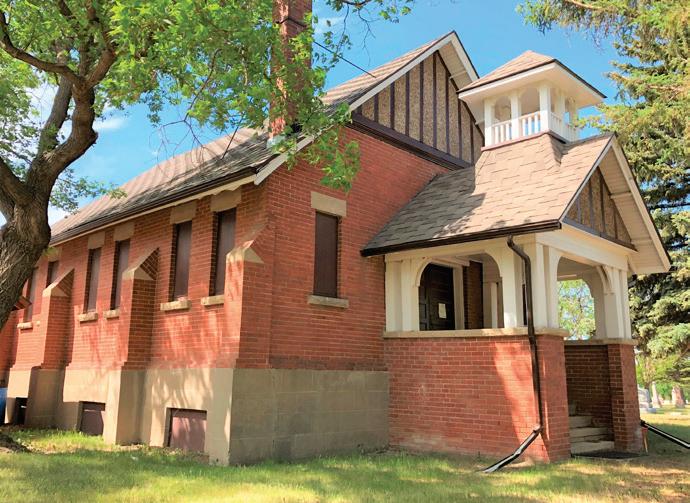
2 minute read
Five Properties That Tell the Story of Moose Jaw
Moose Jaw has a rich history that you can re-live through its many beautiful heritage buildings. The following is a list of five properties that are still standing today that have had a major impact on Moose Jaw in its early days. The CPR Station (5 Manitoba St. East) Moose Jaw has always been a rail town, and thus the CPR Station has played a major role in the city’s history and development. In fact, the roots of CPR in Moose Jaw date back to 1882. For years, the station was a hub of activity due in part to its placement along the Soo Line. Visitors and settlers alike rode the rails to Moose Jaw and, during the war years, it transported soldiers off to the frontlines. This ver sion of the station — the third one built in the city — was constructed in the 1920s. Once completed, it was known for its grandeur and dining hall. The Royal George Hotel AKA The Park Hotel (28 Manitoba St. East) Once one of Moose Jaw’s swankiest hotels, the Royal George, located right across the street from the CPR Station, saw many visitors come and go in the city’s early days. When it was built in 1911, it was Moose Jaw’s largest hotel. Its construction came during Moose Jaw’s short-lived “boom” period that lasted for a few years. Today, the building is known as the Park Hotel and is still in operation as a bar and lounge. The Elk Block (16-18 Main St. North) The original Land Titles building (the Dominion Lands Office) now the location of the Tunnels of Moose Jaw, played a huge role in the city’s early days. The office handled land registrations for southwest Saskatchewan and was the largest land registration district in western Canada. It is estimated that in 1908, about one quarter of all homestead registrations came through this office. These registrations increased Moose Jaw’s population.
The Natatorium (220 Fairford St. East) The Natatorium was the precursor to the Temple Gardens spa. Tourists came from all over to swim at the Nat. It dates back to 1910, when the city was trying to develop an oil and gas well. Instead, they found geothermal mineral water. The Natatorium was built as a relief project during the 1930s. Its grand opening was attended by over 3,000 people. Over the years, the Nat also hosted weddings, danc
es and other sporting events.

The Moose Jaw Cemetery (1000 Caribou St. East) You can learn a lot about Moose Jaw’s early days by visiting the cemetery. The old Moose Jaw Cemetery, located on the city’s east side, is where many of Moose Jaw’s pioneers are buried. Here you will find monuments for prominent businesspeople, members of the North West Mounted Police and members of the city’s early Chinese population. Tasinaskawin Brulé, the wife of Chief Black Bull, is buried here. Many of the headstones in the cemetery are quite ornate and symbolic in nature. The chapel on site is also noteworthy. It played a prominent role during the Spanish Flu pandemic, as bodies were stored in the basement while awaiting the ground to thaw for proper burial. Tours of the cemetery are held regu larly during the summer months. Look for signs.









